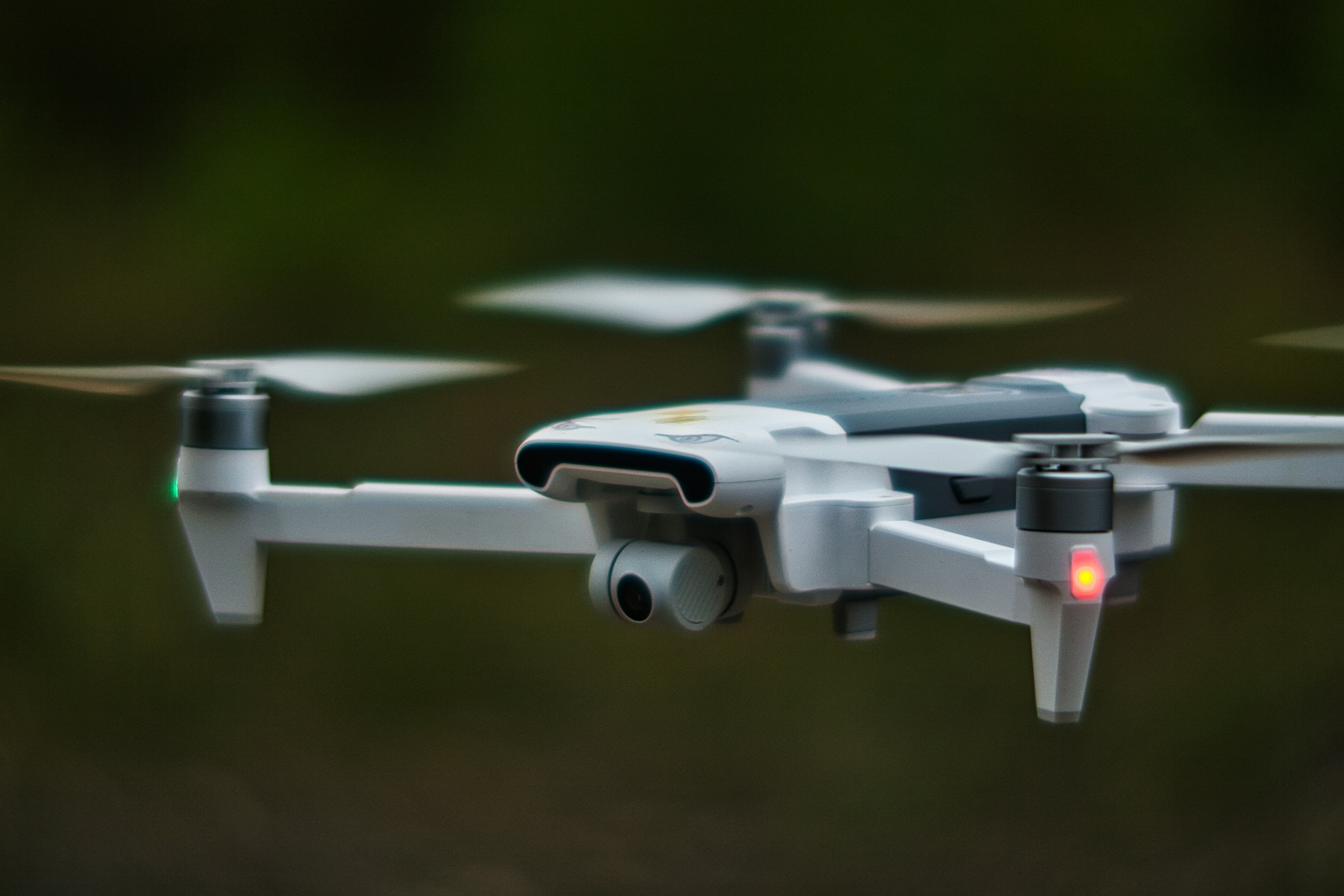
Return-to-Work Pathways: Relaunch Your UAV Career with Returnships, Flexible & Hybrid Roles
Re-entering the workforce after a career break—whether for parenting, caring responsibilities or another life chapter—can feel like navigating a new flight path, especially in the high-tech world of unmanned aerial vehicles (UAVs). Fortunately, the UK’s rapidly expanding drone sector now offers a variety of return-to-work pathways, from structured returnships to flexible and hybrid roles. These programmes value the transferable skills and resilience you’ve honed, pairing you with mentorship, targeted upskilling and supportive networks so you can ascend back into UAV operations, development or management with confidence.
In this guide, you’ll discover how to:
Understand the booming demand for UAV talent in the UK
Translate your organisational, communication and problem-solving skills into UAV roles
Overcome common re-entry challenges with practical solutions
Refresh your technical and regulatory knowledge through targeted learning
Access returnship and re-entry programmes tailored to the UAV sector
Find roles that fit around family commitments—whether flexible, hybrid or full-time
Balance your career relaunch with caring responsibilities
Master applications, interviews and networking specific to UAVs
Draw inspiration from real returner success stories
Get answers to common questions in our FAQ section
Whether you aspire to return as a flight operations manager, autonomy engineer, maintenance technician or survey pilot, this article maps out the steps and resources you need to relaunch your UAV career.
1. The UK UAV Landscape: Why Now Is the Time to Return
Rapid Market Expansion
The UK drone industry is projected to exceed £42 billion by 2030, driven by applications in surveying, agriculture, inspection, emergency response and delivery services.
Government initiatives such as the Future Flight Challenge and the Civil Aviation Authority’s (CAA) UAS roadmap are supporting R&D, regulatory frameworks and commercial roll-out.
Skills Shortage
Over 60% of UK UAV operators report difficulties recruiting qualified pilots, autonomy engineers and maintenance technicians.
Employers increasingly value returners who bring strong risk management, project coordination and stakeholder-liaison skills developed during career breaks.
Flexible & Hybrid Models
While on-site flight operations remain essential, roles in data analysis, autonomy software development and airspace planning can often be done remotely or on a hybrid basis.
Companies now offer flexible hours, compressed-week contracts and job shares to attract parents and carers.
2. Why Parents and Carers Excel in UAV Roles
Advanced Organisational ProwessCoordinating family routines—school runs, appointments and home logistics—sharpens your ability to plan flight schedules, manage maintenance cycles and coordinate multidisciplinary teams.
Strong Communication & Stakeholder ManagementCaring roles develop empathy and active listening, crucial when gathering requirements from survey clients, liaising with airspace regulators or explaining flight plans to non-technical stakeholders.
Adaptability & ResilienceNavigating unexpected home challenges fosters creative problem-solving and resilience—key attributes when responding to rapidly changing weather, airspace restrictions or technical faults.
Fresh Perspectives on Safety and OutreachYour diverse experiences can inform more inclusive community engagement, robust safety briefings and user-friendly drone interfaces.
3. Overcoming Re-Entry Challenges: Common Obstacles & Solutions
Regulatory Knowledge Becoming OutdatedSolution: Enrol in refresher courses on the latest CAA regulations (CAP 722), beyond-visual-line-of-sight (BVLOS) operations and UK drone traffic management (UTM) developments.
Confidence GapsSolution: Join mentor schemes and returner communities such as the Women in Drones UK group or Drone Industry Insights network to rebuild self-belief through peer support.
CVs Focused on Past RolesSolution: Adopt a skills-based CV format highlighting recent simulator hours, volunteer survey flights or virtual training modules you completed during your break.
Fading Professional NetworksSolution: Reconnect via virtual meetups (e.g., UK Drone Cluster Network), LinkedIn UAV groups and alumni events—aim to reach out to two or three contacts weekly.
4. Refreshing Your UAV Skillset After a Break
4.1 Core Technical Competencies
Reacquaint yourself with:
Flight Operations: flight planning software (e.g., UgCS, DJI Terra), safety management systems
Autonomy & Software: Python/C++ for autopilot scripting, ROS/DroneKit, AI-based object detection
Maintenance & Troubleshooting: battery management, sensor calibration, airframe inspection procedures
Data Processing: GIS tools (QGIS, ArcGIS), photogrammetry (Pix4D, Agisoft Metashape)
Airspace & Communication: ADS-B, UTM platforms, CAA U-space regulations
4.2 Online Courses & Certifications
Drone Pilot Academy UK – CAA A2 CofC and GVC ground school refresher modules
Coursera – Introduction to Unmanned Aerial Systems (University of Colorado)
edX – Autonomous Aircraft Specialisation (Embry-Riddle Aeronautical University)
Udemy – UAV Maintenance & Troubleshooting
4.3 Workshops & Virtual Labs
CAA Webinars – updates on drone regulations and safety guidance
Commercial Drone Industry Association (CDIA-UK) Workshops – BVLOS and UTM demonstrations
Virtual Flight Simulators – MAVinci, Liftoff for flight-scenario practice
4.4 Hands-On Projects & Portfolio
Maintain a GitHub repo of autopilot scripts, mission-planning templates or data-processing pipelines.
Volunteer to support local conservation or mapping projects with drone surveys.
Document your journey via short blog posts or tutorial videos, showcasing both technical skill and communication clarity.
4.5 Micro-Learning & Podcasts
Podcasts: UAVenture Podcast; Drone Radio Show
Blogs & Newsletters: sUAS News; Drone Industry Insights
Apps: SoloLearn for coding practice; DroneDeploy mobile for on-the-go mapping
5. Returnship & Re-Entry Programmes in UAV
5.1 What Are UAV Returnships?Returnships are paid, cohort-based programmes combining mentorship, technical refreshers and real-world flight or software projects, easing your transition back into long-term UAV roles.
5.2 Leading UK & Global Programmes
Thales Drone Returners – placements in defence UAV operations and autonomy R&D
Airbus Aerial ReLaunch – cohort-based support for satellite-drone integration and image analysis
Skyspecs Return to Flight – hands-on roles in inspection and analytics teams
Volocopter Career Restart – projects in eVTOL automation and airspace integration
5.3 Application Tips
Signal Your Intent: Update your LinkedIn headline to “Open to UAV Returnships.”
Tailor Your Narrative: Highlight any simulator hours, volunteer surveys or open-source autopilot contributions.
Leverage Referrals: Connect with alumni for insights, introductions and potential endorsements.
6. Finding Flexible, Hybrid & Full-Time UAV Roles
6.1 Types of Flexible Arrangements
Flexible Hours: Core flight or lab windows with remote data-analysis or mission-planning tasks.
Hybrid Models: A blend of on-site flight operations and remote autonomy development or mapping work.
Compressed Weeks: Longer days over fewer days to accommodate family commitments.
Job Shares & Part-Time: Splitting roles such as flight operations or data analysis between two professionals.
6.2 Negotiating Your Preferred Setup
Be Transparent: Communicate your care windows (e.g., school runs) early in the recruitment process.
Reference Your Rights: Under the UK’s Flexible Working Regulations, employees with 26 weeks’ service can request changes to their pattern.
Propose a Pilot: Suggest a trial period (e.g., six weeks) to demonstrate productivity under your proposed model.
6.3 Leveraging uavjobs.co.uk
Use filters for Flexible Hours, Hybrid Working and Return-to-Work listings.
Look for our Returner-Friendly badge on employer profiles.
Subscribe to custom alerts for new roles matching your criteria.
👉 Browse flexible & hybrid UAV roles »
7. Balancing Your UAV Comeback with Caring Responsibilities
Time-Blocking Techniques: Employ Pomodoro or time-boxing for focused mission-planning, coding or data processing. Reserve family commitments in a shared calendar to protect work sessions.
Childcare & Support Networks: Explore local childcare co-ops, after-school clubs and holiday schemes. Join parent-carer forums for resource swaps and peer advice.
Wellbeing: Schedule short breaks and light exercise—mindfulness apps like Headspace can help maintain mental clarity. Define clear start/finish times to switch off from work outside designated hours.
8. Mastering Applications, Interviews & Networking
8.1 Crafting a Targeted CV
Start with a Skills Summary highlighting flight software, autonomy frameworks and recent upskilling.
Include a concise Career Break note, emphasising simulator hours, volunteer surveys or training you completed.
8.2 Interview Preparation
Technical Challenges: Be ready to design a mission profile, troubleshoot a flight-controller script or explain your risk-assessment process.
Scenario Questions: Describe how you’d handle a last-minute airspace restriction or adapt a survey plan due to weather changes.
Behavioural Questions: Use the STAR method to illustrate resilience under tight deadlines, collaboration with ground teams and stakeholder communication.
8.3 Networking & Personal Branding
Connect with 2–3 new contacts weekly: flight-ops managers, autonomy leads and returner alumni.
Share LinkedIn updates on project demos, tutorial videos or lessons learned from courses.
Attend both in-person events (e.g., Commercial UAV Expo Europe) and virtual webinars (e.g., DroneSafe conferences) to stay visible.
9. Success Stories: UAV Returners Who’ve Thrived
Emma, Survey Pilot & Mum of TwoAfter a four-year break, Emma refreshed her skills with simulator sessions, volunteered on a local conservation mapping project and joined a 12-week Thales Drone Returners programme. She now works hybrid, leading BVLOS surveys for environmental clients.
Mark, Autonomy Engineer & CarerMark took two years out to care for his partner. He completed online courses in ROS-based autopilot coding, contributed to an open-source obstacle-avoidance library and now works flex-time for a logistics drone start-up, splitting his week between home and the lab.
Conclusion: Your UAV Comeback Takes Off Now
Your career break has endowed you with resilience, organisation and empathy—qualities the UK’s UAV sector urgently needs. By strategically upskilling, exploring return-to-work pathways and negotiating the flexible, hybrid or full-time arrangement that aligns with your life, you can relaunch your UAV career on your own terms.
Next Steps:
Create a free profile at uavjobs.co.uk.
Set up tailored alerts for return-friendly, flexible and hybrid UAV roles.
Join our upcoming “Return-to-Work in UAVs” webinar to learn directly from employers and successful returners.
Your next chapter in drone and autonomous flight awaits—welcome back!
FAQ
1. What is a UAV returnship?A UAV returnship is a paid, structured re-entry programme combining mentorship, technical refreshers and hands-on flight or software projects to help you transition from a career break back into UAV roles.
2. Can I request flexible or hybrid working in UAV roles?Yes. Under the UK’s Flexible Working Regulations, employees with 26 weeks’ service can request changes to their working pattern. Clearly outline your care commitments and propose a trial period to demonstrate productivity.
3. How do I explain my career break on my CV?Include a brief “Career Break” section stating the reason (e.g., childcare, caregiving) and focus on simulator hours, volunteer surveys or training modules you completed during that time.
4. Are part-time UAV roles available?While full-time roles remain common, many organisations now offer job shares, project-based contracts and compressed-week models. Use dedicated filters and discuss part-time options with hiring managers.
5. Which UAV skills should I prioritise first after a break?Begin with flight-planning software, basic autopilot scripting and risk-assessment frameworks, then expand into BVLOS operations, data-processing pipelines or autonomy development.
6. How can I rebuild my professional network in UAVs?Attend in-person and virtual events (e.g., Commercial UAV Expo, DroneSafe webinars), join LinkedIn and Slack UAV communities, and engage with returner-focused groups like Women in Drones UK.


